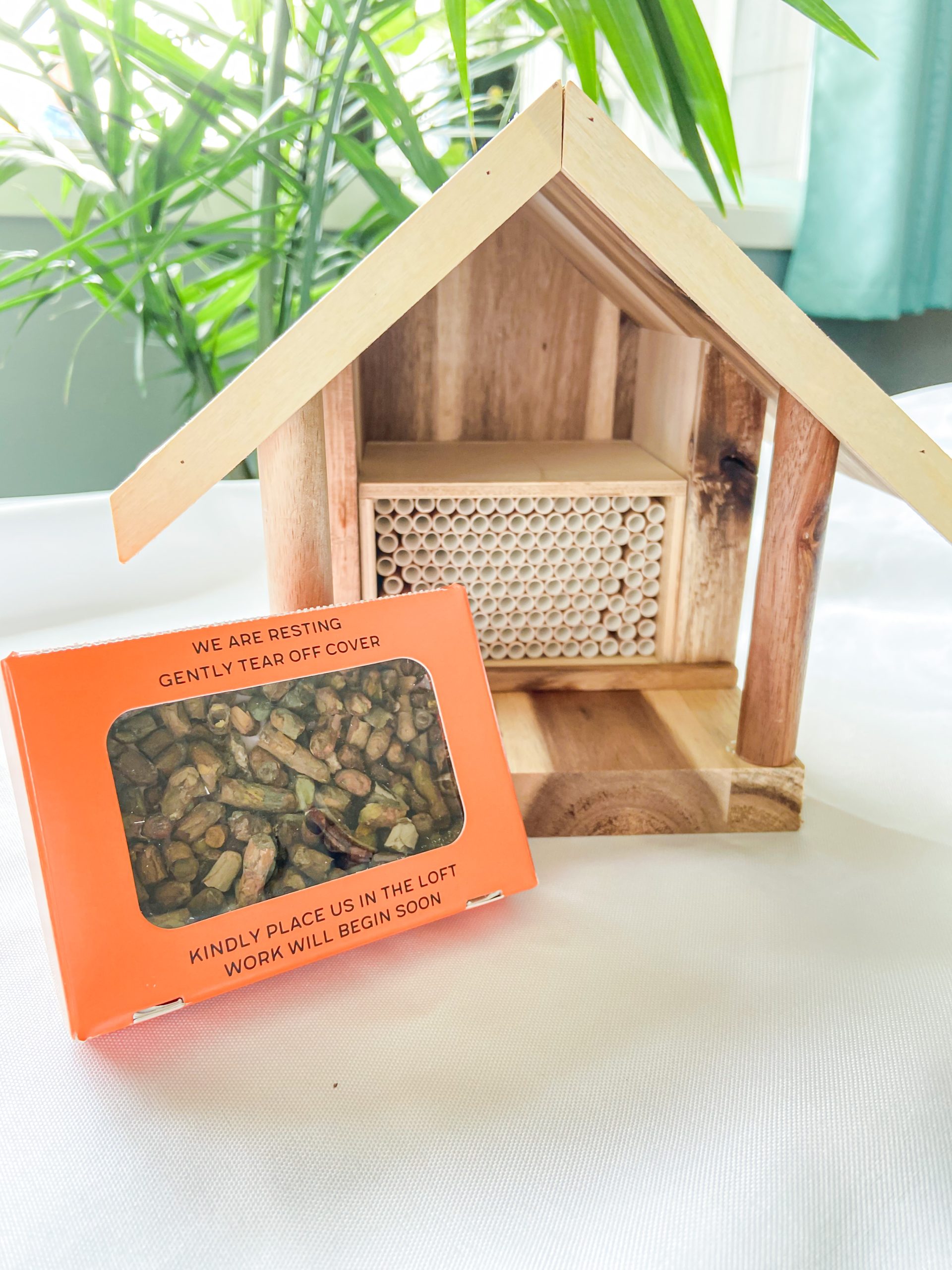Are you already planning your garden for 2026? If you are a greenhouse gardener, planning your set-up around plants that love heat is a big focus, but an often overlooked factor is greenhouse pollination. In an enclosed environment, how can pollinators reach your plants?
With your very own leafcutter bees, you can not only attract but also house leafcutter bees in your high tunnel and watch your vegetables and plants burst at the seams! Below, we will discuss the importance of adequate pollination in greenhouse gardening and how you can watch your greenhouse thrive in 2026 with Kind Bee Farms.
The Importance of Pollination in Greenhouses
Pollination is key to plant growth, and the right amount of pollination in your greenhouse will ensure you get the most out of your yield at the end of the growing season. However, due to the enclosed space, pollination in greenhouses can be trickier than in an open garden.
Many new gardeners may not see the importance of pollination in greenhouses due to the temperature and environmental control of the enclosed space.
However, many plants found in greenhouses still require pollination to grow properly. Without pollinators, you may notice your vegetable seeds, like squash, growing flowers but never reaching full vegetative growth.
Pollinators also provide your greenhouse with more biodiversity, even benefiting self-pollinating varieties by further enhancing their yield and quality.
Overall, drawing pollinators to your greenhouse can only be a benefit and provide a greater guarantee of a fruitful, full-grown harvest!
How to Attract Pollinators to an Enclosed Space
You can encourage pollination in several ways, including self-pollinating plants, cross-pollinating, and hand-pollinating. However, the most effective method is drawing in pollinators like bees, birds, and butterflies. Here are a few ways you can attract pollinators to your greenhouse:
Plant selection: Make sure to grow plants that pollinators like! Flowering plants will draw pollinators due to their vibrant colours, shape, size, and supply of pollen and nectar. Here are a few examples of plants you can grow to attract different pollinators to your greenhouse:
- Birds: Marigolds, zinnia, and black-eyed susans
- Honey bees: Goldenrod, coneflowers, and wild indigo
- Leafcutter bees: Butterfly bush, star flowers, and lavender
Plant positioning: While most plants require pollinators, not every pollinator will reach every plant. For example, leafcutter bees are low flyers and generally avoid taller plants like sunflowers.
The presence of low-growing plant varieties will give leafcutter bees a more direct target and ensure there’s plenty of flowers, vegetables, and plants for them to visit!
Growing flowering plants close to your greenhouse’s front and back entrances will help your other plants receive adequate pollination, as they are more likely to visit your other plants on their way in and out.
Hydration: Just like us, pollinators need adequate hydration to fly and work in a garden. You can further draw more pollinators to your greenhouse door by creating a drinking station with a small dish placed near one of their favourite plants.
Add a leafcutter bee house to your greenhouse: If you want a more concentrated pollination for your greenhouse next summer, you can introduce leafcutter bees with a Pollinator Kit from Kind Bee Farms!
This kit includes an acacia wood bee house, nesting tubes, and an orange box of leafcutter bees. Rather than simply trying to draw pollinators with different planting strategies, you can directly introduce them to your garden.
You can mount the bee house directly in your greenhouse or outside within close proximity. The bee house and nesting tubes will encourage your bees to nest close to home and stay in your garden all summer long!*
Leafcutter bees are known as super pollinators, as they can pollinate 20 times faster than honey bees! Introducing these fast flyers into your greenhouse will help it grow at a more accelerated rate, providing a lush, bountiful harvest at the end of the season.
*Note: If some of your nesting tubes are empty, it doesn’t mean the bees are gone! Sometimes these solitary bees will nest in other areas of your yard or property.
Start Planning Your 2026 Greenhouse with Kind Bee Farms
You can start planning your 2026 greenhouse by pre-ordering a Pollinator Kit from Kind Bee Farms! These summer bees are at their best during consistent temperatures of 20°C and above, and pre-ordering them will ensure they arrive at the exact right time and temperature for your greenhouse!
Subscribe to our Newsletter to learn when our pre-order dates go live, and visit our Blog to learn more about leafcutter bees.

